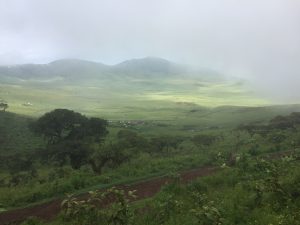
Ngorongora Crater Rim
This is one of our destinations today and hopefully where we will see some of the Big 5 (rhino, elephant, leopard, buffalo and lion) and all of the Ugly 5 (maribu stork, hippo, hyena, wildebeest and warthog)
Ngorongora is actually part of the Serengeti but not the actual National Park. This is because it’s where all the Maasai agreed to move, to allow the protection of the Serengeti. It is called Ngorongora because that is the sound their goats make, when they walk with bells around their necks.
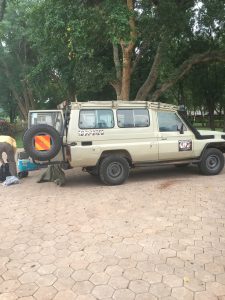
Our safari jeep
We abandon the overland truck and settle comfortably into jeeps for the next few days. Our driver is called Safari. He assures us it IS his real name. We have one last supply stop before the nothingness or everythingness of what lies ahead – 2 nights sleeping in a wilderness camp is the adventure that awaits.
I notice a wee place selling take away hot drinks – which is quite exciting. I am hopeful that there will be coffee and indeed there is. I buy one each for Stu and I then return to the truck. Safari comments that he hopes there was no problem in the shop and that I am all right. Puzzled, I assure him that everything was fine. He explained that I had had a lucky escape. In Kiswahili, the correct word for coffee is Kahawa. The Kiswahili word Kofi actually means slap. So, if I had asked for 2 coffees, I had actually asked for 2 slaps! Good to know.
It is a long steep ascent up the crater road. Apparently, it is not a crater at all – it is a Kaldera because the hole from the eruption was in the side of the mountain originally. The view at the top is truly spectacular and it is difficult to adequately describe the vastness of the landscape below.
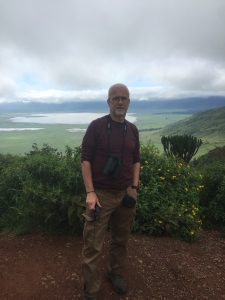
Stuart with Ngorongora behind him
The descent is rapid and as soon as we reach the valley floor, we see wildebeest, buffalo, Grant’s Gazelles, zebras, warthogs, Grant’s gazelles, hyenas and jackals in the first 10 minutes. There is also an abundance of bird life which makes Stuart very happy.
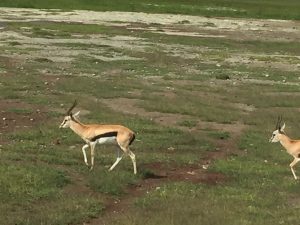
Thomsons Gazelles

Wildebeest and zebras
We watch a pair of jackals try to separate a Thomson gazelle from its baby but the other gazelles help to chase them off. Stuart would have liked to see a kill but I am secretly glad that the baby got away.
Stuart turns out to have a hidden talent for spotting wildlife. He glimpses a well-camouflaged elephant who wanders towards us and then crosses the road very close by.

Why did the elephant cross the road
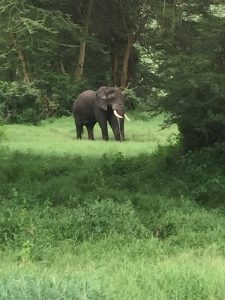
Then he is the first to spot two lions in the grass about 5o metres away. But his most spectacular sighting is pointing out the immediate aftermath of a gazelle giving birth – i.e not the birth itself but the new baby on the ground.

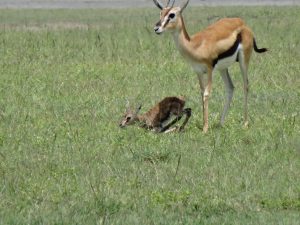

We spend 15 minutes, watching as she licks the baby clean, nudges him (or her) to stand and encourages it to suckle. It is an incredible sight and Safari and Martin confirm it is very rare to see this happen so close to the track. We have been incredibly lucky. And the icing on the cake is that Stuart has managing to photograph it!
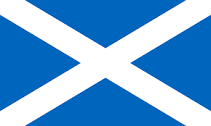
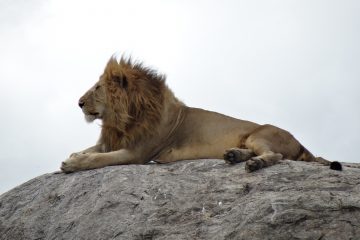
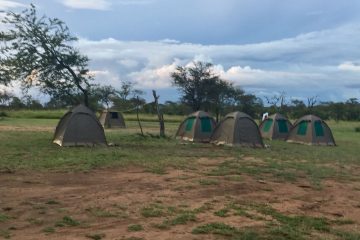
0 Comments